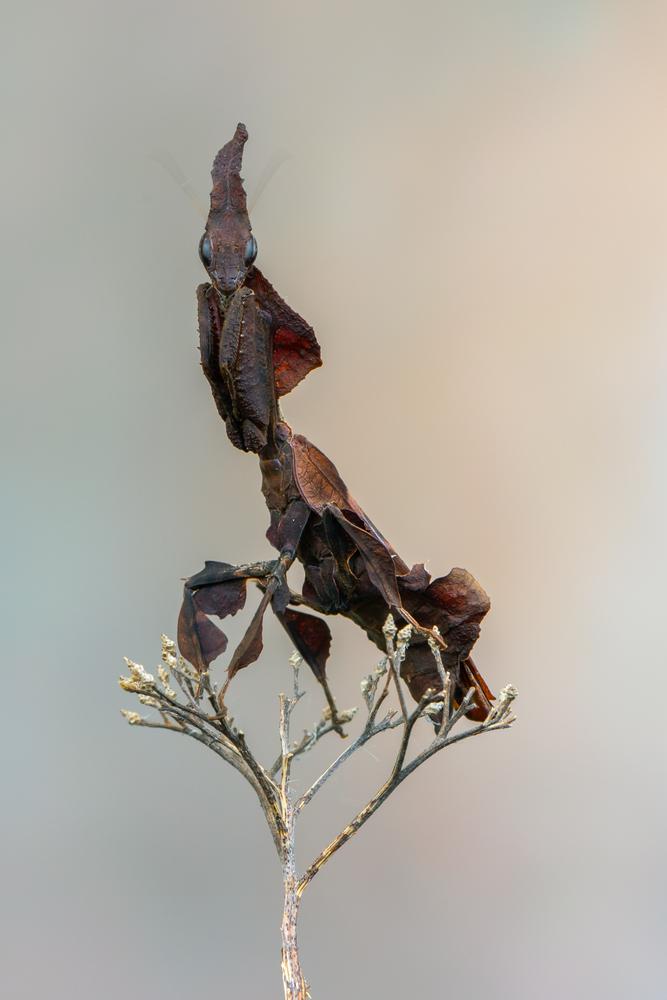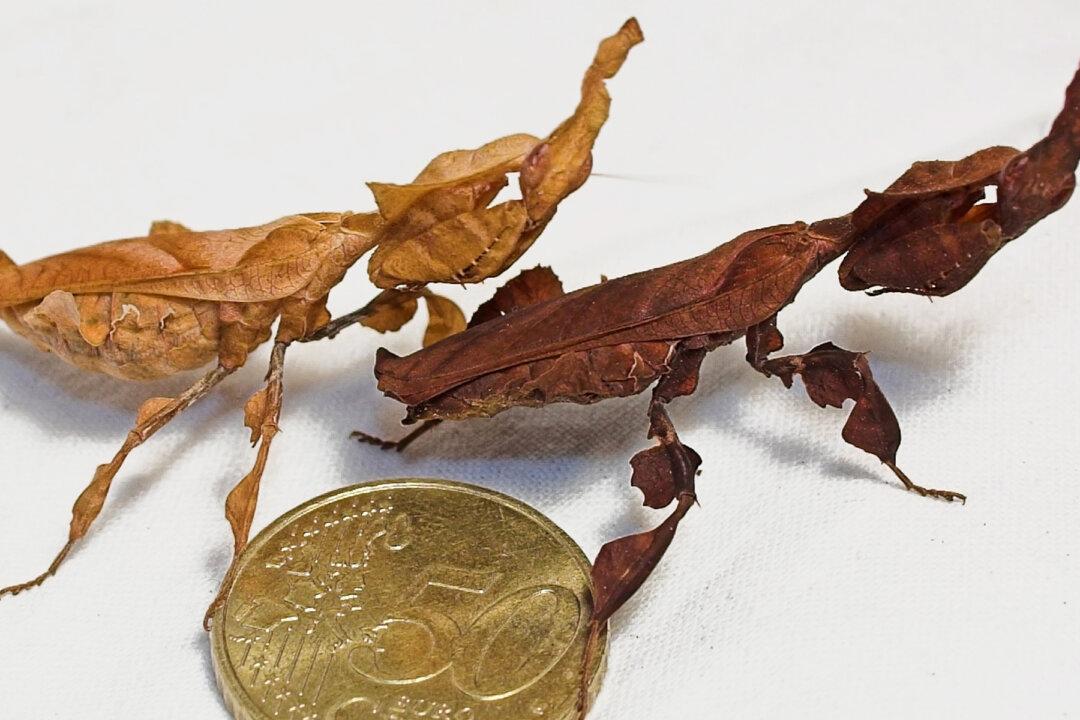At first, it looks like nothing more than a dry crumpled leaf, but on closer inspection, the unmistakable eyes, antenna, and lobed legs reveal a small species of mantis. However, this isn’t just any garden-variety praying mantis; it’s the Ghost mantis, which can be found in Africa and Madagascar.

Marek R. Swadzba/Shutterstock





